This post may contain affiliate links. If you click through a link and make a purchase, I may receive a commission at no additional cost to you. As an Amazon Associate, I earn from qualifying purchases. Read the full disclosure here.
TENS units (transcutaneous electrical nerve stimulation) are marketed as a convenient non-drug way to decrease pain.
But can you overuse a TENS unit?
Find out in this in-depth look at the benefits, risks, and myths of electrical stimulation.
Disclaimer: This content is for educational purposes and is not medical advice. Read the full disclaimer.
How do TENS units work?
TENS stands for transcutaneous electrical nerve stimulation aka electrical stimulation or e-stim for short.
TENS units (AKA TENS machines) are used as a method for decreasing pain by stimulating your body’s natural pain killers. (More on how this works in the next section.)
Adhesive pads (electrodes) placed on the skin are attached to lead wires and connected to a TENS unit. Leads can also be attached to specialized sleeves designed to cover an area and deliver electrotherapy.
Electrodes come in different sizes, but the only difference is the amount of surface area they cover.
The user has control over how high the stimulation is, which is a personal preference, but higher isn’t better. TENS should feel strong, but still comfortable.
Treatments can vary from 10 minutes in a clinical setting to several hours per day with a home unit to manage pain and may also be combined with ice or heat.
Pain-relieving effects can last anywhere from a few minutes to a few hours.
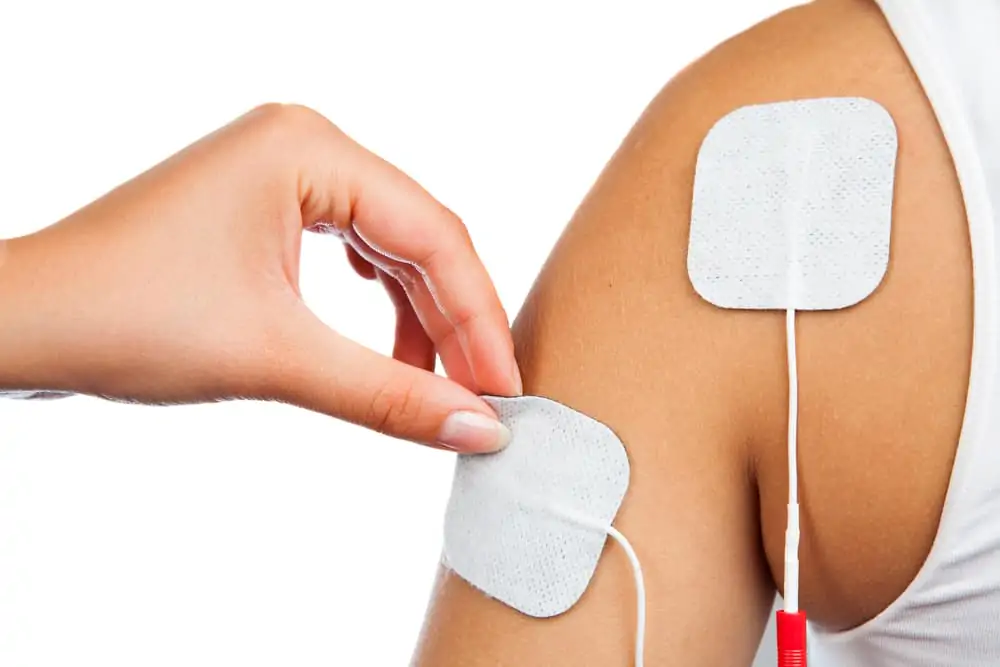
How does a TENS unit decrease pain?
The central nervous system plays a large role in pain, which is why individual responses are so variable. This leads to vastly different thresholds to pain intensity and pain relief between people.
TENS works via the gate control theory, by sending sensory input in via an electrical impulse to interrupt and decrease the pain signal sent back to the area.
Stimulation feels like a tingling sensation. If the unit is set too high for your personal comfort, this sensation can start to feel more sharp and painful. It’s important to note that higher isn’t better.
Stimulation levels vary from person to person, and the unit should be set to strong but still comfortable, whatever that means to you.
Some report significant pain relief with TENS and others report no change. This variability leads to mixed results among many research articles, and there may be a strong placebo effect at play.
TENS treatment can be used for:
- Muscle pain/muscle spasms
- Joint pain/arthritis
- Post-surgical pain
- Sports injuries
- Chronic pain (fibromyalgia, nerve pain, etc.)
- Commonly used for neck pain, shoulder pain, knee pain, back pain, sciatica, etc.
Benefits of TENS units
- Non-drug way to manage pain
- Relatively inexpensive
- Can be used as little or as much as you like and doesn’t carry the risk of addiction like some pain medications
- Pain-relieving or reducing effects can last several minutes to several hours – this varies by person

Disadvantages of TENS units
- May not be right for you if you have contraindications (more below on this)
- Can cause injury if used improperly
- Some ongoing costs for additional electrodes, which need to be replaced at regular intervals
- Benefits are temporary and not cumulative
- TENS is for pain management only. It doesn’t address other factors needed to recover from an injury like strength or flexibility.
Contraindications & precautions for TENS machines
TENS therapy is generally considered safe, however, there are some times that it should not be used or you may require special clearance from a doctor.
Some examples are:
- Presence of implanted cardiac pacemakers, defibrillators, or other internal electronic devices
- Epilepsy
- Certain types of cancers
- Pregnancy (without specific clearance from your doctor)
- Over open wounds, active infections, or blood clots
- Over the front of the neck or chest
- When there is an allergic reaction to the adhesive pads
- Undiagnosed pain
- Over areas with decreased sensation due to difficulty with sensing a comfortable stimulation level
*Always read the safety instructions of your TENS unit to make sure you understand how to use it safely.*
Can you overuse a TENS unit?
Since TENS is not an invasive therapy, there’s no risk of overdosing on electrotherapy. The biggest risk of using TENS too much is the risk of skin irritation underneath the electrodes.
It’s recommended to vary the placement of the pads to give the skin a break if you find you’re using TENS frequently.
How much does a TENS unit cost?
The average cost of a TENS unit is between $50-$250. Quality, treatment mode settings, and strength of stimulation can vary between units.
Insurance may cover the cost of a TENS unit. Speak with your carrier to find out where to purchase a unit and if authorization or a doctor’s prescription is required in advance.
Units may also be eligible for reimbursement with health savings or health spending accounts.
There will be some ongoing costs for electrodes that need to be replaced at regular intervals.
TENS machines are available over the counter or you can also speak with your doctor or physical therapist.
Basic over-the-counter TENS units are available on Amazon and Walmart:
(prices vary so check both retailers for the best deal)
- NURSAL 24 Dual Channel TENS/EMS unit (Amazon)
- Easy at Home TENS unit (Amazon)
- iReliev Dual Channel Electro Therapy Pain Relief System (Walmart)
- iReliev – iRenew TENS + EMS System for pain relief and recovery (Walmart)
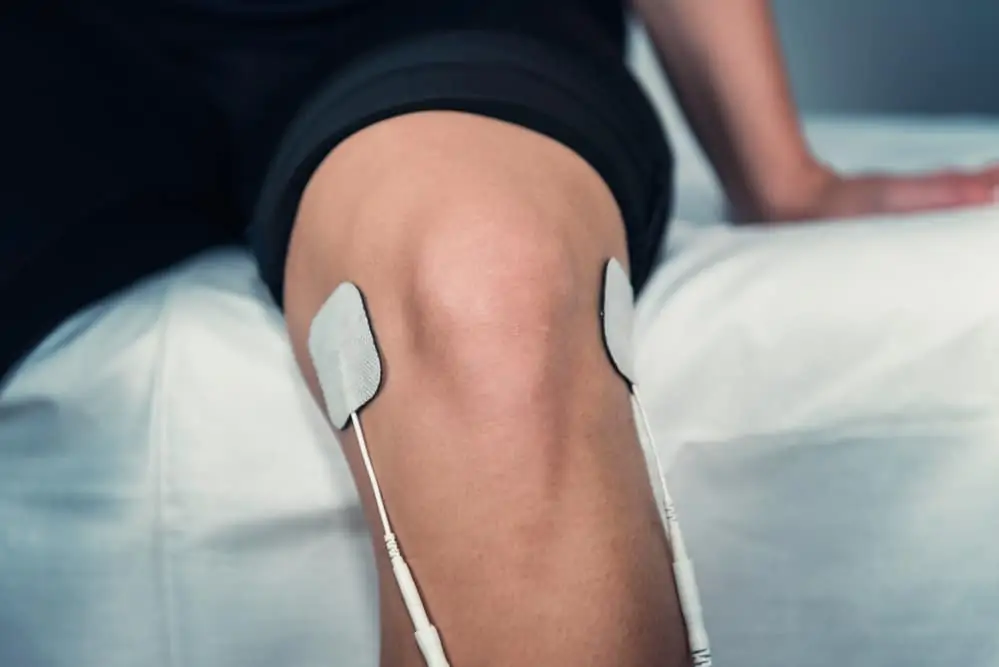
Can TENS speed up muscle recovery?
If you have an injury or are an athlete, you’re always on the lookout for ways to get better faster!
While TENS may give you the perception of less pain and soreness, it’s important to note that it’s not “fixing” anything.
If you have no contraindications, TENS may be a helpful adjunct to a well-rounded training program. Appropriate healing times and training methods should be adhered to to allow the body adequate time to rest and recover.
A TENS unit might feel good but won’t make you Superman.
Can TENS make muscles stronger?
We’ve all seen those advertisements for strange abdominal belts that claim to give you a six-pack via electrical impulses.
This type of stimulation is called NMES (Neuromuscular Electrical Stimulation) sometimes just called EMS (Electronic Muscle Stimulation) and is performed at a different frequency and intensity than TENS.
(So no, TENS settings cannot make you stronger.) Many personal TENS units do not have EMS settings, it depends on the model, for example, the iReliev TENS + EMS pain relief and recovery system is capable of both.
So the next logical question is….
Can EMS make muscles stronger?
Sort of, let me explain.
Sometimes, EMS is applied after surgery if a person has difficulty performing a muscle contraction on their own.
We’ll take the classic example of quadriceps muscle weakness after an ACL reconstruction.
EMS may be helpful to improve strength early in a rehab setting, however, once the person has sufficient strength, this type of treatment is no longer the best option as there are better ways to improve strength.
EMS is also used in wearable devices as a means of assisting function for special populations (stroke, spinal cord injury, etc.)
As far as EMS to improve muscle strength for active individuals, research is mixed and mostly limited to the high-level athletic population, using EMS in conjunction with traditional training methods.
These methods often include elaborate setups and supervision by trained professionals to target multiple muscles at a time, wearing an EMS device while performing strength movements.
Adams V. looked at recent research and reported that EMS has the potential to increase muscle mass by around 1% and improve muscle function by approximately 10–15% after 5–6 weeks of treatment.
There’s still a lot of controversy around this topic, for example, are these numbers actually significant, and do they translate into functional improvement?
EMS should also not be seen as a replacement for traditional training and there are many benefits of exercise that cannot be replaced by EMS.
The bottom line is, there may be some gains in strength and athletic performance incorporating EMS under a supervised training program, but you won’t get a six-pack by simply sitting on the couch hooked up to a gimmicky belt.
According to the FDA, abdominal EMS devices tend to be advertised as a way to decrease waist circumference and give you “washboard abs,” however, no devices are actually cleared to do this.
While an EMS device may give you a perception of increased strength, using these devices alone will not create major changes in appearance without also adding proper diet and exercise. To visualize abdominal muscles (aka a six-pack), body fat percentage needs to be incredibly low and spot reducing fat is not a thing. Fat loss is a systemic metabolic process.
The involuntary contraction that these devices produce is also not as beneficial as voluntary muscle contractions with functional movements. It’s also worth noting that having your muscles involuntarily contracted is not very comfortable.
It’s important to research what these devices are actually capable of because false advertising adds to the spread of health and fitness misinformation.
Sorry, no Netflix six-pack.
Wrapping up
I think there will always be a place for this type of non-drug pain management. Though the research is mixed, TENS can be a lifesaver for many people managing pain. As long as you have no contraindications, when used properly, TENS units are low risk and inexpensive.
The important thing to keep in mind is that TENS shouldn’t be seen as a magical cure-all and should be used in conjunction with a comprehensive pain management or physical therapy program.
If you feel that TENS helps significantly reduce your pain, then a TENS unit might be right for you.
References:
Adams V. Electromyostimulation to fight atrophy and to build muscle: facts and numbers. J Cachexia Sarcopenia Muscle. 2018;9(4):631-634. doi:10.1002/jcsm.12332
DeSantana JM, Walsh DM, Vance C, Rakel BA, Sluka KA. Effectiveness of transcutaneous electrical nerve stimulation for treatment of hyperalgesia and pain. Curr Rheumatol Rep. 2008;10(6):492-499. doi:10.1007/s11926-008-0080-z
Ho CH, Triolo RJ, Elias AL, et al. Functional electrical stimulation and spinal cord injury. Phys Med Rehabil Clin N Am. 2014;25(3):631-ix. doi:10.1016/j.pmr.2014.05.001
Kemmler W, Teschler M, Weißenfels A, et al. Effects of Whole-Body Electromyostimulation versus High-Intensity Resistance Exercise on Body Composition and Strength: A Randomized Controlled Study. Evid Based Complement Alternat Med. 2016;2016:9236809. doi:10.1155/2016/9236809
Vance CG, Dailey DL, Rakel BA, Sluka KA. Using TENS for pain control: the state of the evidence. Pain Manag. 2014;4(3):197-209. doi:10.2217/pmt.14.13

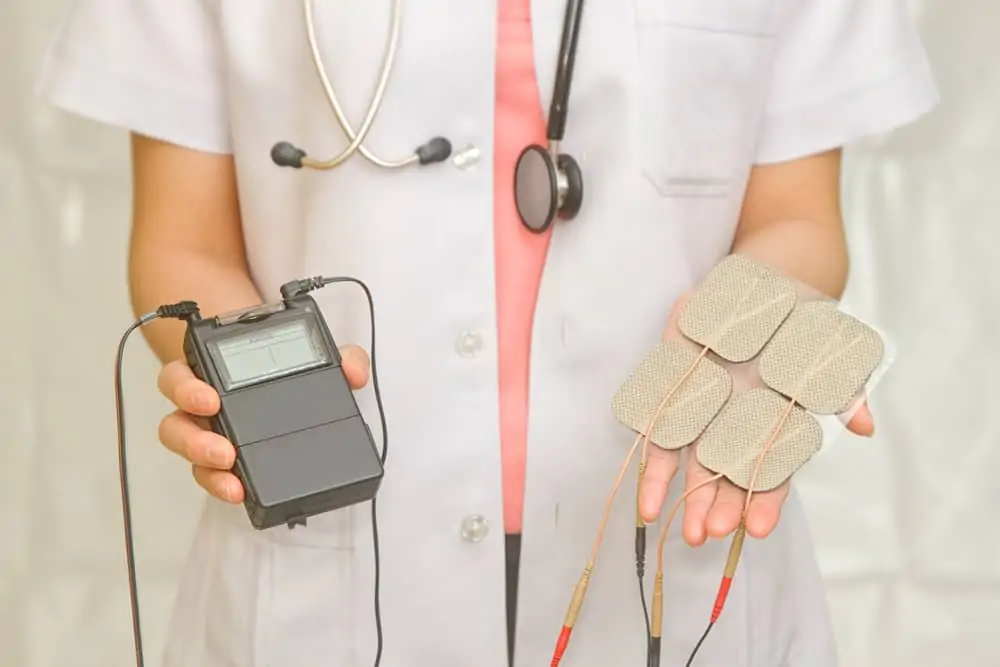
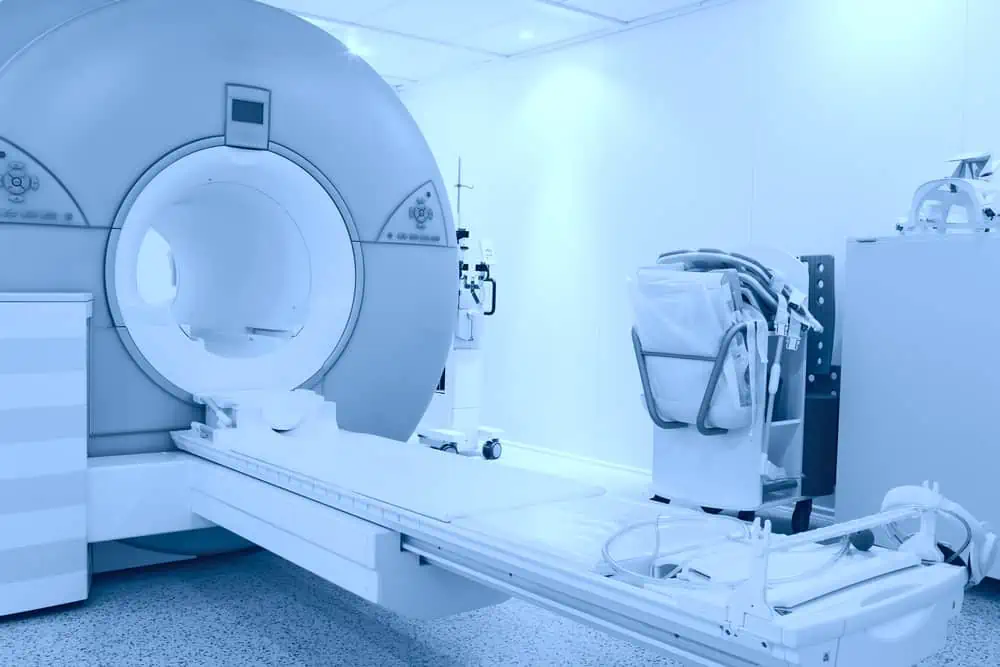

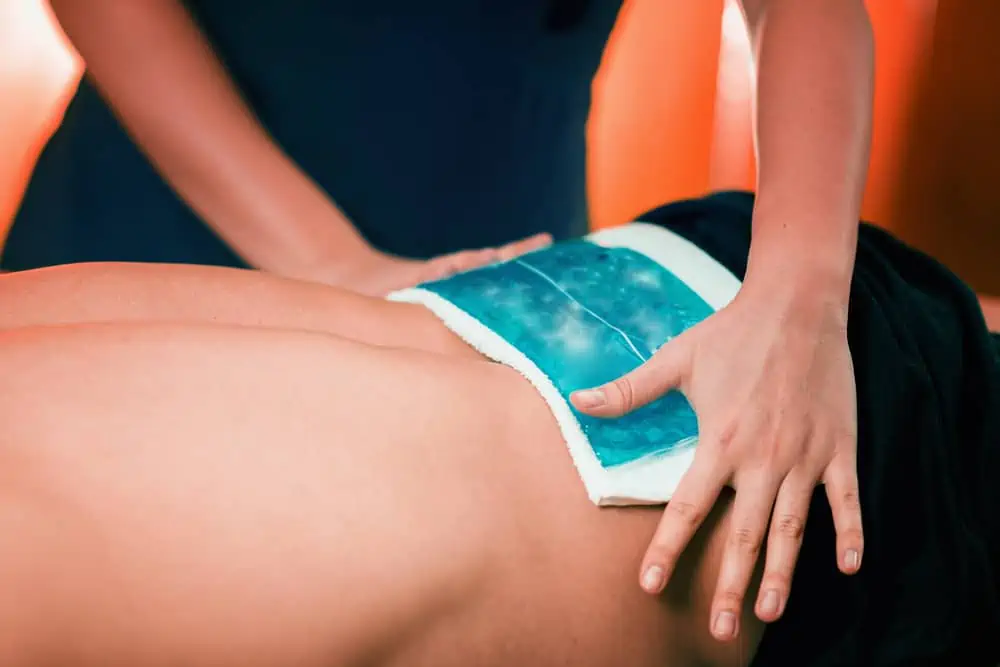



Wow! Sounds very interesting! Thanks for sharing!
TENS unit was a life saver for me. It was first introduced to me by my PT when I had a car accident and had to do PT sessions. Until now, I still grab this helpful device to help manage some residual pain around my neck and back. It is worth it. It’s not an absolute solution to manage pain but a helpful addition to the overall pain interventions and remedies.
It’s definitely a lifesaver for some people, even just to take the edge off the pain. Thanks for sharing your story.
Wow! Very interesting, but it definitely sounds too extreme for me personally. I appreciate the thorough explanation 🙂
It can be very gentle on low settings, but some people just don’t like it. It’s a personal preference. Thanks for reading!